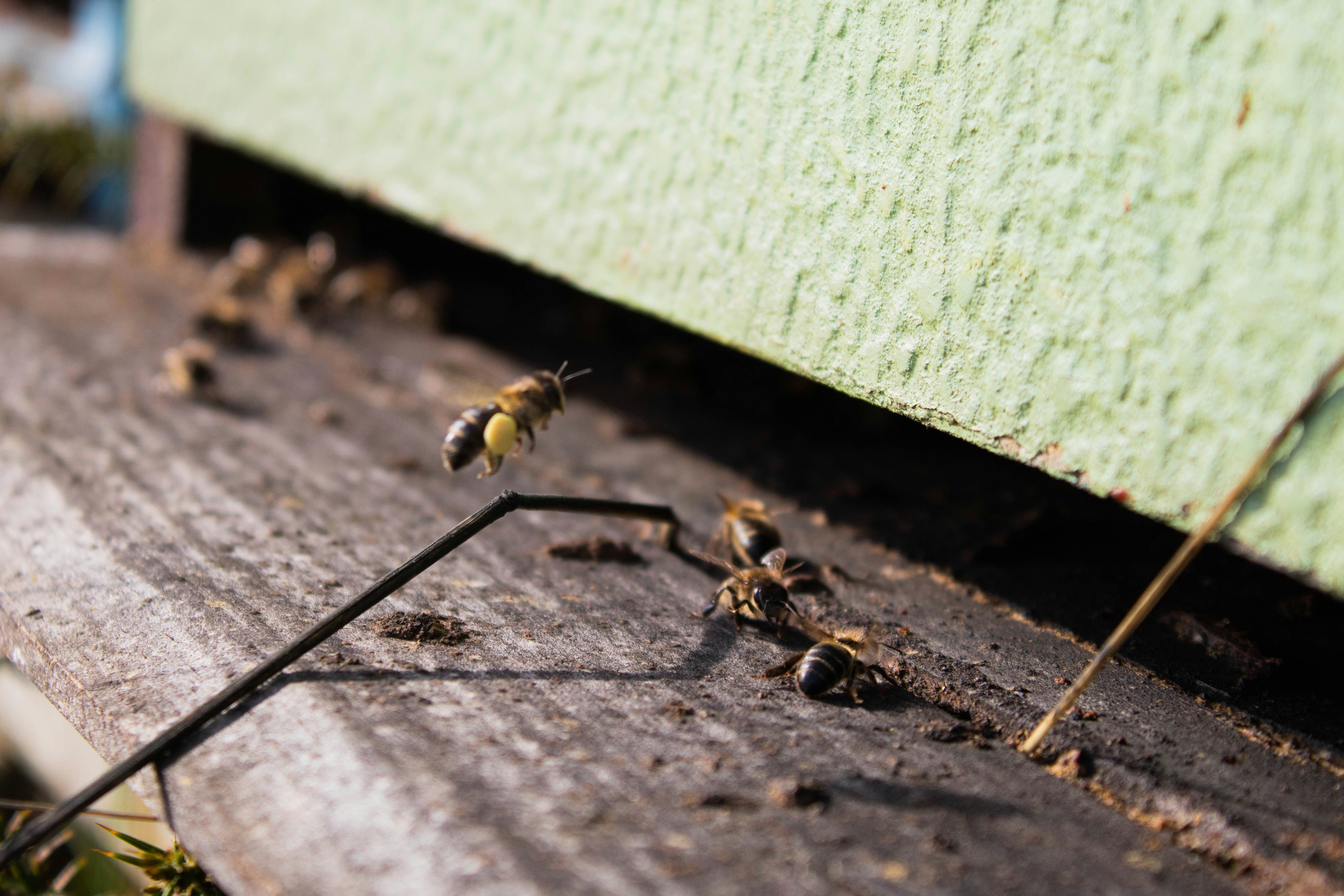
Photo by <a href="https://unsplash.com/@reims" rel="nofollow">Karlis Reimanis</a> on <a href="https://unsplash.com/?utm_source=hostinger&utm_medium=referral" rel="nofollow">Unsplash</a>
Introduction to Zoophysics
Zoophysics is an interdisciplinary field that merges physics and animal biology, emphasizing the significance of understanding the physical principles that govern the structure and functionality of living organisms. This intriguing area of study seeks to explain how physical laws apply to the behavior and adaptations of various animal species, providing insights into their survival mechanisms in diverse environments.
At its core, zoophysics delves into the mechanics of animal movement, thermoregulation, fluid dynamics, and material properties of biological tissues. For instance, the study of locomotion in animals can reveal how different species have evolved unique strategies to optimize energy efficiency and speed, depending on their habitats. By applying principles of physics to these biological phenomena, researchers can gain a comprehensive understanding of how animals have adapted to their surroundings over evolutionary time.
The importance of zoophysics extends beyond academia; its applications have profound implications in fields such as biomimicry, robotics, and conservation biology. By analyzing the adaptations of animals, scientists and engineers are inspired to develop innovative technologies that replicate these efficient systems. For example, the structure and function of bird wings have influenced aerodynamics in aircraft design, while the mechanisms of fish propulsion have contributed to advancements in underwater vehicle technology.
Furthermore, knowledge garnered from zoophysics holds the potential to inform conservation efforts by highlighting the specific physical challenges that different animal species face in their environments. As climate change and habitat loss increasingly threaten biodiversity, understanding the physical limits and adaptations of organisms becomes crucial in devising effective strategies for their protection.
Historical Background of Zoophysics
The field of zoophysics, which investigates the physical principles governing animal biology, has roots that intertwine the disciplines of physics and biology. The origins of this integration can be traced back to ancient civilizations, where natural philosophy encompassed the study of living organisms in relation to the principles of nature. Prominent figures such as Aristotle and Galen contributed to early understandings of animal anatomy and behavior, laying foundational work that would later influence more advanced scientific inquiry.
During the Renaissance, the revival of interest in anatomy and physiological studies marked a significant milestone. The innovations of scientists like Leonardo da Vinci, who meticulously documented his observations of animal movement and mechanics, exemplified the merging of biological insight with physical principles. This period saw an enhancement in the understanding of biomechanics, as scholars began to systematically apply geometrical and physical concepts to study the motions of various species.
By the 19th century, the formalization of zoophysics as a discipline began to take shape with the contributions of notable scientists such as Hermann von Helmholtz and Claude Bernard. Helmholtz’s work on the conservation of energy and the laws of thermodynamics lent a quantitative framework that could be applied to physiological processes in animals. Meanwhile, Bernard’s research on homeostasis influenced the understanding of physiological regulation in an ever-changing environment, further establishing the crucial link between physics and biology in animal studies.
The 20th century heralded a series of advancements in technologies that allowed for an even greater exploration of zoophysics. Innovations such as high-speed cameras, pressure sensors, and computer simulations enabled researchers to capture and analyze animal behaviors with unprecedented precision. This convergence of disciplines ultimately gave rise to various applications in fields like biomimetics, ecology, and evolutionary biology, demonstrating the importance of the physical principles that underpin the biological functioning and adaptability of animals.
The Fundamental Principles of Physics in Animal Biology
Animal biology encompasses a wide range of physical phenomena that can be better understood through the lens of fundamental physics principles such as mechanics, thermodynamics, and fluid dynamics. These areas of physics play critical roles in explaining the physiological processes and behaviors exhibited by various species within the animal kingdom.
Mechanics, particularly classical mechanics, is vital in understanding how animals move. The principles of force, mass, and acceleration dictate the way animals run, swim, or fly. For instance, the biomechanics of a cheetah’s sprinting capability involves the application of Newton’s laws of motion. As the cheetah accelerates, its body uses forces generated by its limbs to propel itself forward, demonstrating the relationship between physics and biological motion.
Thermodynamics also has significant implications in animal biology. The laws governing energy transfer, heat exchange, and thermoregulation illustrate how animals maintain homeostasis in varying environments. For example, endothermic animals, like mammals and birds, generate body heat through metabolic processes, effectively utilizing thermodynamic principles to adapt to their habitats. In contrast, ectothermic animals, such as reptiles, rely on external heat sources, showcasing distinct thermodynamic adaptations that influence their behavior and physiology.
Fluid dynamics, the study of how fluids behave, underpins numerous biological functions, especially in aquatic animals. The swimming mechanisms in fish or the flight dynamics of birds demonstrate how organisms are affected by fluid forces. The streamlined shape of fish reduces drag in water, enabling efficient movement, while birds’ wing shapes and flapping patterns are optimized for flight through the air, illustrating the crucial role fluid dynamics plays in animal locomotion.
By integrating these fundamental physics principles, researchers can gain deeper insights into the complexities of animal biology. Understanding how mechanics, thermodynamics, and fluid dynamics interact with biological systems provides useful frameworks for analyzing various phenomena observed in the animal kingdom.
Instruments and Techniques Used in Zoophysics
Zoophysics, as an interdisciplinary field, relies on an array of advanced instruments and techniques to investigate the intricate relationship between physics and animal biology. One key area of focus is imaging technologies, which have revolutionized the way researchers visualize and analyze animal structures and functions. Techniques such as X-ray imaging, MRI (Magnetic Resonance Imaging), and ultrasonography enable scientists to examine internal anatomical features without invasive procedures. These imaging methods provide crucial insights into the physiology of various species, allowing for detailed observations of organ dynamics during rest and activity.
Biomechanical modeling is another vital methodology employed in zoophysics. By utilizing computational tools and simulations, researchers can replicate biological systems to observe physical behavior under varied conditions. These models often draw from principles of mechanics to study movement, force generation, and energy expenditure in animals. For instance, researchers have designed models to investigate the locomotion of creatures such as birds or fish, allowing them to understand how body structure influences performance in different environments.
Furthermore, experimental setups in zoophysics frequently incorporate both laboratory and field techniques to gather empirical data. In controlled laboratory environments, scientists can manipulate variables and directly observe the effects on animal physiology. Field studies add another layer of understanding, allowing for the observation of species in their natural habitats. Employing sophisticated data collection tools, including motion capture systems and sensors, researchers can monitor behavioral patterns and physiological responses to external stimuli.
In conclusion, the fusion of imaging technologies, biomechanical modeling, and experimental methodologies serves as the backbone of zoophysics. These instruments enable researchers to unveil the complexities of animal biology while strategically applying physical principles to enhance our understanding of the natural world.
Case Studies: Zoophysics in Action
The field of zoophysics blends the principles of physics with biological studies, revealing crucial insights into how various animal species adapt and thrive within their environments. One notable case study involves the mechanics of flight in birds, specifically the albatross. Their unique wing morphology allows for dynamic soaring, an energy-efficient technique that enables these birds to glide over vast ocean distances with minimal effort. By harnessing wind currents and exhibiting effective lift-to-drag ratios, the albatross exemplifies the direct relationship between physical adaptations and energy conservation.
Another exemplary case study is found in the structure of the cheetah’s body. The cheetah is known for being the fastest land animal, a prowess attributed to its specialized musculoskeletal system. Analysis of its limb proportions, flexible spine, and highly developed muscles reveals the intricate physics behind their explosive acceleration. Each element of their anatomy, from their long legs to their retractable claws, culminates in the efficiency required for speed and agility, highlighting the vital role of physical sciences in understanding animal locomotion.
<psimilarly, a=”” ability=”” adaptations=”” allows=”” ambiguous=”” an=”” and=”” anglerfish=”” anglerfish’s=”” better=”” biomechanics,=”” by=”” can=”” capture=”” combined=”” competitive=”” contributes=”” create=”” creature=”” deep-sea=”” dynamics=”” effectively=”” ensure=”” environment.=”” extend=”” fascinating=”” fast=”” feeding=”” fluid=”” from=”” in=”” integrating=”” intricate=”” intriguing=”” its=”” jaw=”” jaws=”” knowledge=”” lure,=”” mechanics,=”” mechanisms=”” negative=”” of=”” on=”” p=”” perspective=”” pressure=”” prey=”” provide=”” rapidly=”” researchers=”” scenarios.=”” substantial=”” success=”” survival.
These case studies not only reveal how the principles of physics underpin an animal’s adaptability and survival mechanisms but also emphasize the importance of interdisciplinary research in understanding the complexities of life on Earth. As researchers continue to explore the relationship between physics and animal biology, more discoveries await in the diverse and intricate world of zoophysics.
The Role of Zoophysics in Conservation and Animal Welfare
Zoophysics, the interdisciplinary study combining physics with animal biology, plays a vital role in conservation efforts and the enhancement of animal welfare. By understanding the physical capabilities and needs of various species, conservationists are better equipped to create effective strategies for protecting wildlife and their habitats. For instance, knowledge of the locomotion mechanics of certain animals can inform habitat design, ensuring that environment recreations are conducive to essential behaviors like foraging or mating.
Additionally, the principles of zoophysics allow for a more nuanced appreciation of animal physiology. This understanding aids in developing better welfare standards for animals in captivity, such as in zoos or aquariums. Proper evaluation of an animal’s physical needs, including space requirements and sensory stimulation, can lead to improvements in enclosure designs, directly impacting the psychological and physical well-being of the animals. By integrating aspects of physics, such as sound and light dynamics, caregivers can create environments that mimic natural habitats, promoting more natural behaviors among captive animals.
Moreover, the application of zoophysics extends to the management of wildlife populations. For example, understanding the foraging patterns of a species can guide the implementation of protected areas, ensuring that they remain viable eco-regions. Additionally, analyzing the physical effects of environmental changes, such as habitat fragmentation or climate conditions, provides critical insights for conservation strategies aimed at mitigating the impacts on wildlife.
In essence, the intersection of physics and animal biology through zoophysics offers powerful tools and methodologies that elevate both conservation efforts and the welfare of animals. By focusing on the physical aspects of animal life, stakeholders can foster healthier ecosystems and improve the quality of life for species under human care or in their natural environments.
Future Directions and Research in Zoophysics
As the field of zoophysics continues to evolve, several key trends and potential breakthroughs are poised to shape its future. The integration of emerging technologies is revolutionizing the research landscape, allowing scientists to explore and quantify animal behaviors and physiological processes with unprecedented precision. Notably, advancements in imaging techniques, such as high-speed videography and laser-based measurement systems, allow researchers to capture dynamic movements and interactions among animals in real-time, providing insights that were previously unattainable.
Moreover, the use of artificial intelligence and machine learning is beginning to play a significant role in zoophysics. By analyzing vast amounts of data collected from various studies, these technologies can identify patterns and correlations that might be overlooked by human researchers. This can lead to enhanced predictive models of animal behavior and physiology, facilitating a deeper understanding of how animals adapt to their environments. As these computational tools become more robust, they are expected to drive innovative approaches to studying complex biological systems.
Interdisciplinary collaboration is another crucial direction for future research in zoophysics. By uniting physicists, biologists, ecologists, engineers, and computer scientists, researchers can leverage diverse expertise to address multifaceted questions regarding animal life. Such collaborations can enhance the design of experiments and the interpretation of findings, yielding more comprehensive insights into the principles governing animal biology.
As researchers continue to delve into the intricate relationship between physical laws and animal systems, the potential implications of their findings could extend far beyond theoretical knowledge. For instance, understanding the biomechanics of animal locomotion may inspire innovations in robotics and materials science. Overall, the future of zoophysics is rife with possibilities, promising an enriched comprehension of the underlying principles that govern the lives of animals and their interaction with the environment.
Educational Opportunities in Zoophysics
The field of zoophysics, which merges principles of physics with animal biology, has gained prominence in recent years. This interdisciplinary domain offers diverse educational pathways for students and professionals alike. Various institutions worldwide have begun to recognize the importance of integrating these two disciplines, resulting in a broader range of academic programs tailored to prospective zoophysicists.
Many universities now offer specialized courses that encompass both physics and biological sciences, laying the groundwork for a comprehensive understanding of how physical principles apply to living organisms. For example, students may engage in courses that cover biomechanics, which studies the movement of animals through the laws of physics, or bioenergetics, focusing on energy transfer within biological systems. Such courses often include laboratory components, where students can engage in hands-on experiments to observe theoretical principles in action.
Additionally, some institutions offer dedicated degrees or specializations in zoophysics, providing students with unique opportunities to delve deeper into the subject. These programs often include collaborations with departments dedicated to life sciences, engineering, and environmental studies, encouraging students to explore innovative research that links physics with animal behavioral patterns, locomotion, and physiology.
Research opportunities also abound in zoophysics, particularly at facilities and laboratories that focus on interdisciplinary approaches. For instance, students and young professionals might engage in projects studying the aerodynamic properties of bird flight or the hydrodynamic efficiency of fish. Such research not only contributes to academic knowledge but also has practical applications in fields such as robotics, conservation, and bioengineering.
As zoophysics continues to evolve, education in this area becomes increasingly vital. It nurtures the next generation of scientists who are adept at bridging the gap between physics and biology, ultimately advancing our understanding of the natural world and enhancing our ability to tackle complex biological challenges.
Conclusion: The Importance of Zoophysics in Modern Science
Throughout this exploration of zoophysics, we have delved into the critical intersection between physics and animal biology, highlighting how the principles of physics are essential for understanding various aspects of animal life. The significance of zoophysics extends beyond academic interest; it plays a pivotal role in enhancing our comprehension of animal structures, functions, and behaviors. By applying concepts such as biomechanics and fluid dynamics, scientists can uncover the underlying mechanics of animal locomotion, communication, and physiological adaptation.
The study of zoophysics not only sheds light on how animals navigate their environments but also has real-world applications. For instance, insights gained from the study of bird flight and fish swimming can inform the design of more efficient vehicles and improve robotic systems. Moreover, a grasp of the physical principles governing animal physiology can lead to advancements in veterinary medicine and wildlife conservation strategies. This connection emphasizes the relevance of a multidisciplinary approach in solving complex biological questions.
<pit alike=”” and=”” animal=”” appreciate=”” approach=”” as=”” between=”” biological=”” biology.=”” boundaries=”” breakthroughs=”” can=”” challenges=”” conservation,=”” continue=”” could=”” current=”” ecology,=”” enthusiasts=”” essential=”” exploration=”” fields=”” for=”” further=”” future=”” healthcare.=”” holds=”” in=”” innovative=”” integration=”” interplay=”” intricacies=”” is=”” life,=”” of=”” offering=”” our=”” p=”” physics=”” potential=”” promise=”” push=”” research.
In conclusion, recognizing the importance of zoophysics in modern science enriches our perspective on the natural world and invites a deeper curiosity about the complexities of life. Exciting discoveries await those willing to navigate this fascinating terrain at the crossroads of physics and animal biology.





